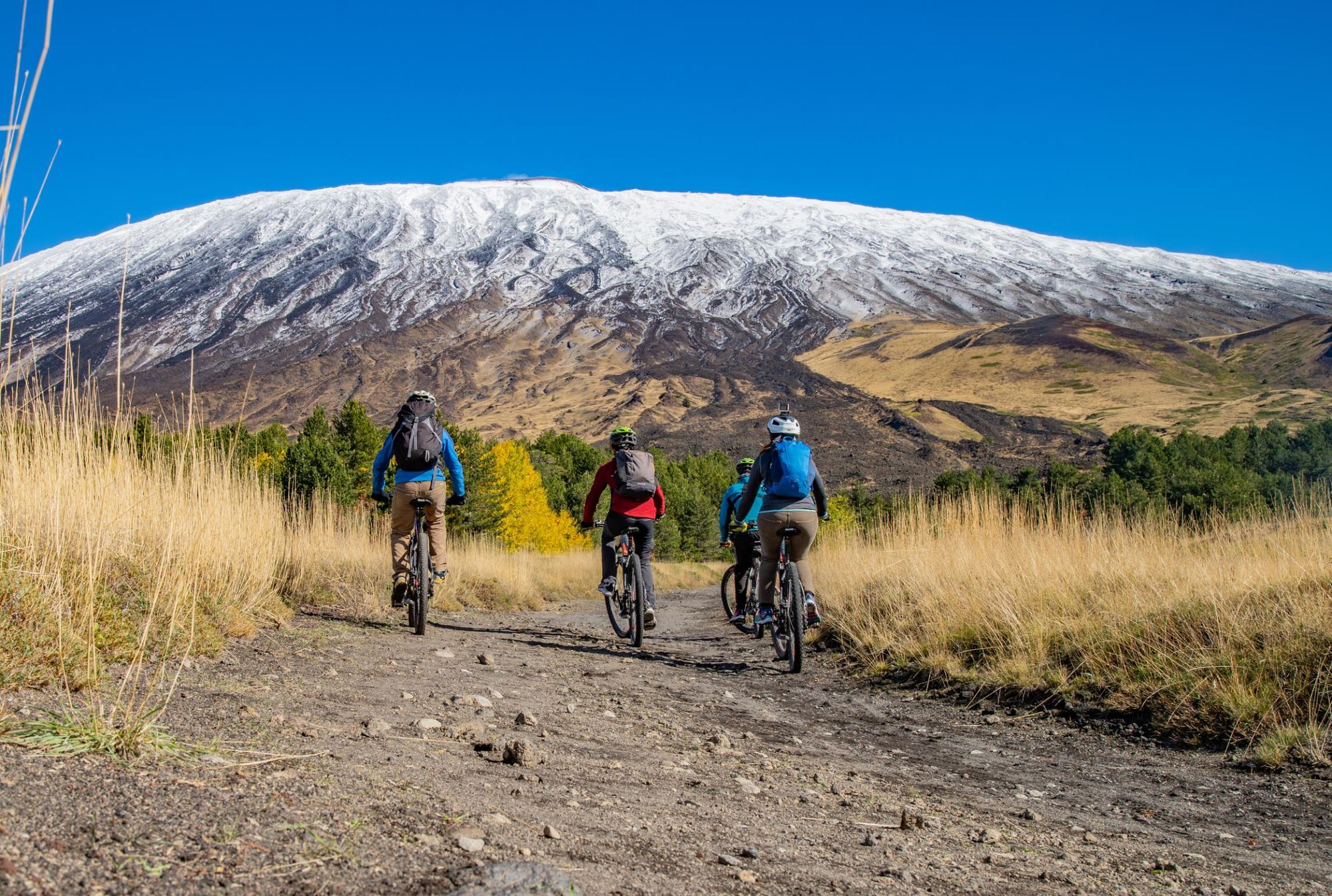Cycling is a year-round sport. Just because the days get shorter and colder doesn’t mean you have to hang up your helmet for the year. But if you’ve had a little too much rain and mud on your home network of trails, then you can always head to the southern reaches of Europe, where the weather is milder, and where the professionals flock for their winter training camps.
We’ve selected 10 of our favourite winter cycling destinations in Europe, from Portugal’s sun-splashed Atlantic coast to the volcanic highlands of Madeira, the ‘Island of Eternal Spring’. These are places beloved by both road and mountain biking riders, known for their soaring gradients, flowing descents and the kind of landscapes that make you forget your aching legs.
Of course, winter weather can be unpredictable, so sunshine can’t be guaranteed. Come prepared for type two fun. Many of the destinations we’ve selected have different microclimates, so remember to pack layers – you’ll need warm gear and decent waterproofs, especially when cycling at altitude.
The reward, though, is unforgettable rides in landscapes you’ll want to come back to long after winter has passed.
1. Alentejo & Algarve, Portugal
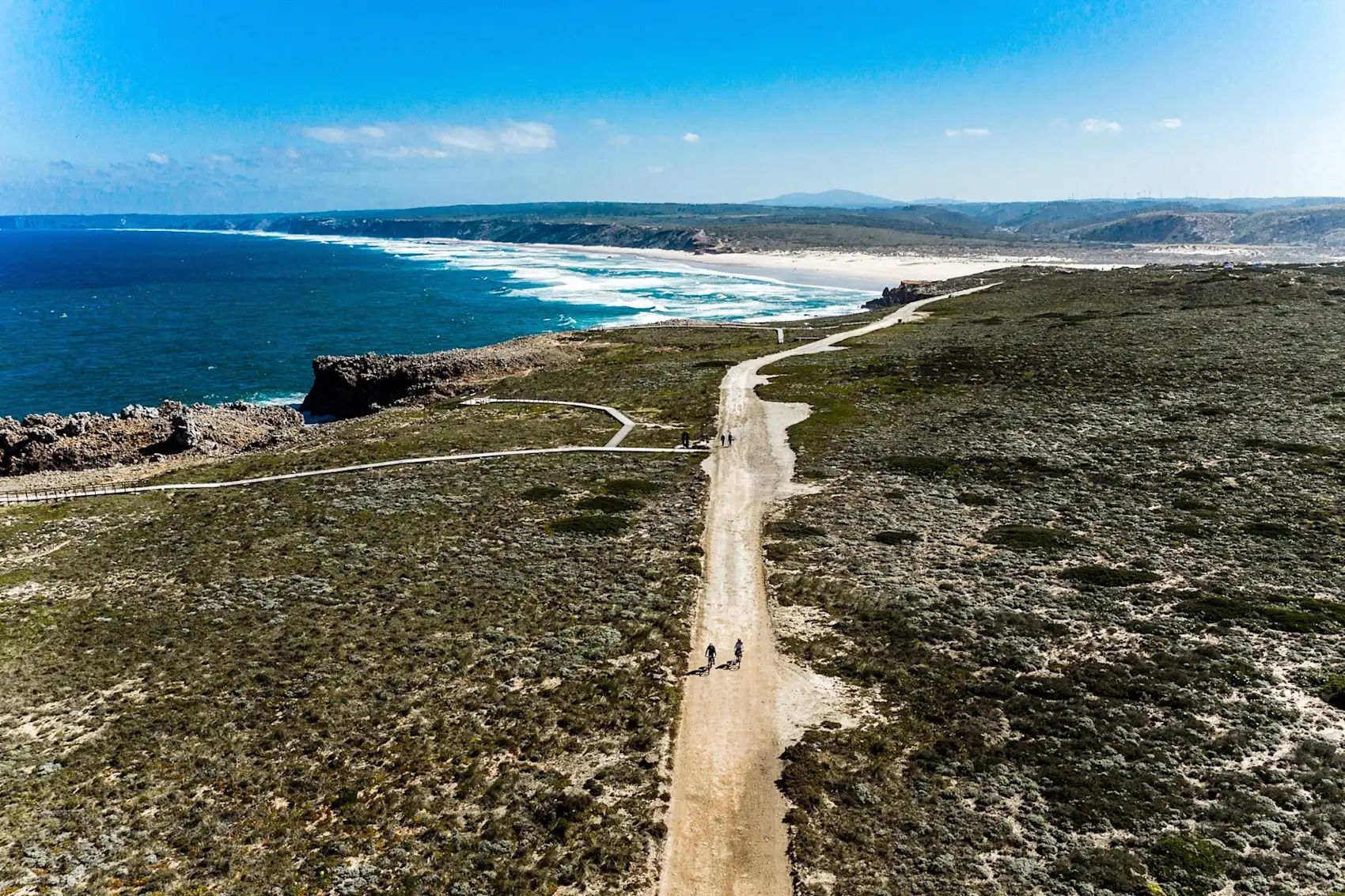
- Top route: the Rota Vicentina
- Average winter temperatures: 15–17°C (Faro)
- Best for: sea views
The coast and hills of the Algarve are crisscrossed with quiet backroads and sandy doubletrack that make for easy winter road and gravel exploration. The vast Alentejo region lies north of the Algarve, its Atlantic coast buffeted by waves, windswept beaches backed by undulating dunes.
To explore the coast, cycle the Ecovia do Litoral, also known as the EuroVelo 1, a long-distance cycling route along the Portuguese coast. The 295 mile (476km) section through the Algarve and Alentejo links fishing ports, sea cliffs and shimmering coves.
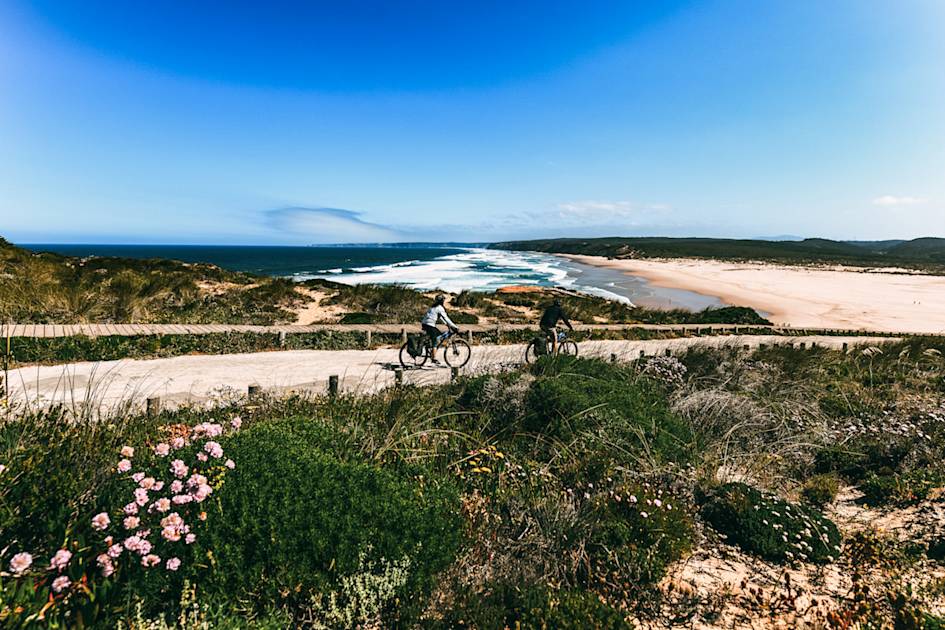
You can also cycle the Rota Vicentina, part of a network of hiking and cycling routes through the Algarve and Alentejo—the 143 mile (230km) Caminho Histórico is the most cycling-friendly. Ride on paved and unpaved roads across limestone cliffs, sandy peninsulas, cork forests and verdant valleys.
Inland, the Via Algarviana is an 186.4 mile (300km) mountain bike trail through the Algarve mountains of Caldeirão, Monchique and Espinhaço de Cão, and the limestone hills and orchards comprising the barrocal landscape, ending on the Alentejo coast.
Winter in southern Portugal is mild and bright, but Atlantic showers and wind are common, especially on the coast. Duck inland when coastal roads get gusty.
2. Finnmarksvidda, Norway
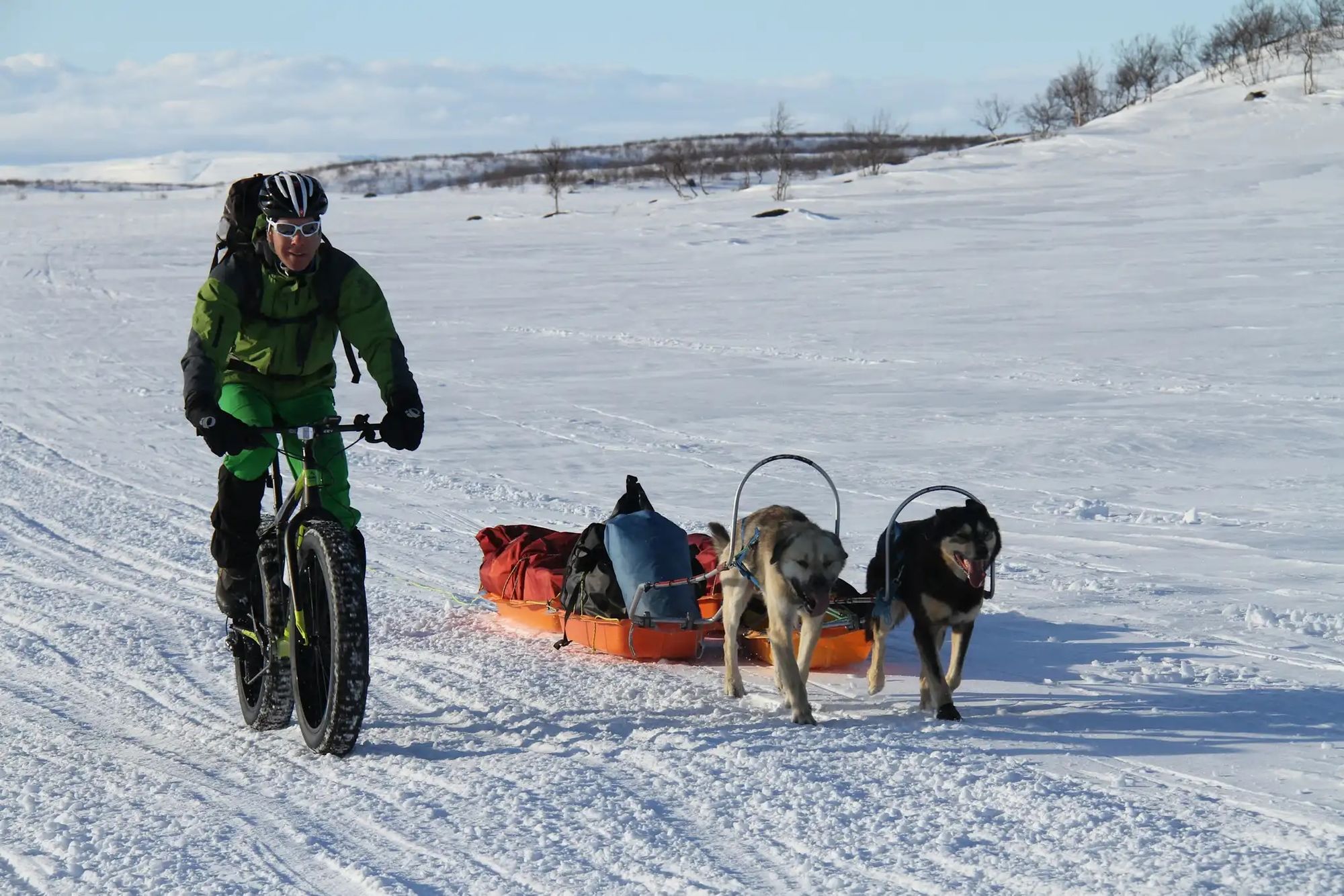
- Top route: Souusjavri to Alta
- Average winter temperatures: -10 to -20°C
- Best for: Arctic wilderness immersion
The Finnmarksvidda is a plateau which stretches for hundreds of miles above the Arctic Circle; a snowbound wilderness of Sámi settlements, frozen rivers and tundra. Fat bikes are the only way to cross it, bumping over packed snow while you tow supplies on a pulk sled. Beginning in the village of Souusjavri, you can cycle for 59 miles (95km) across the frozen landscape, passing clusters of pine trees and herds of reindeer.
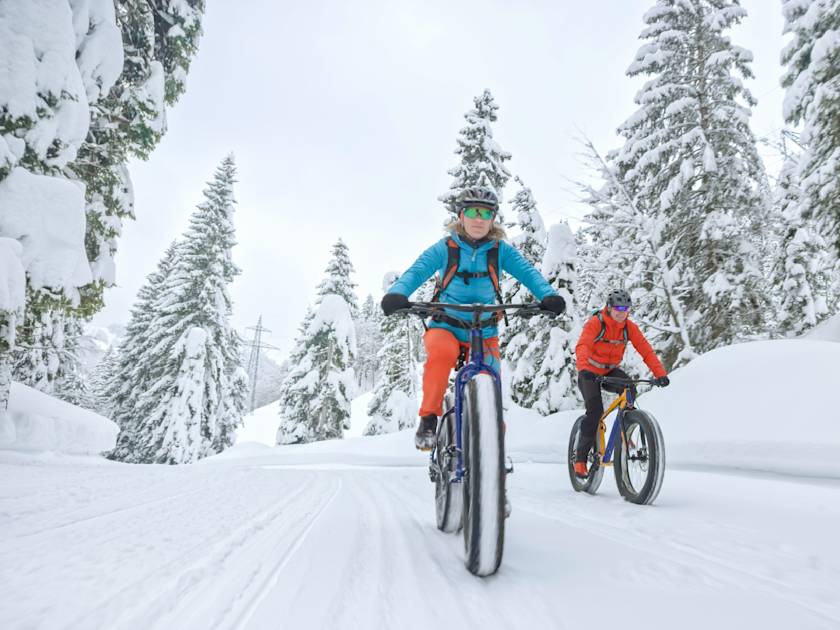
We’d recommend undertaking this expedition as winter begins to transition to spring. Travel in December or January and you can expect very little daylight, and a lot of snowfall. Fatbiking is still possible, but over much shorter distances. By the end of February, days are beginning to brighten, and there’s still a lot of snow on the ground. Nights bring the chance of aurora borealis dancing across the sky.
It’s challenging, remote and utterly unforgettable — more expedition than training camp, and one of the wildest places you’ll ever ride.
3. Sicily, Italy
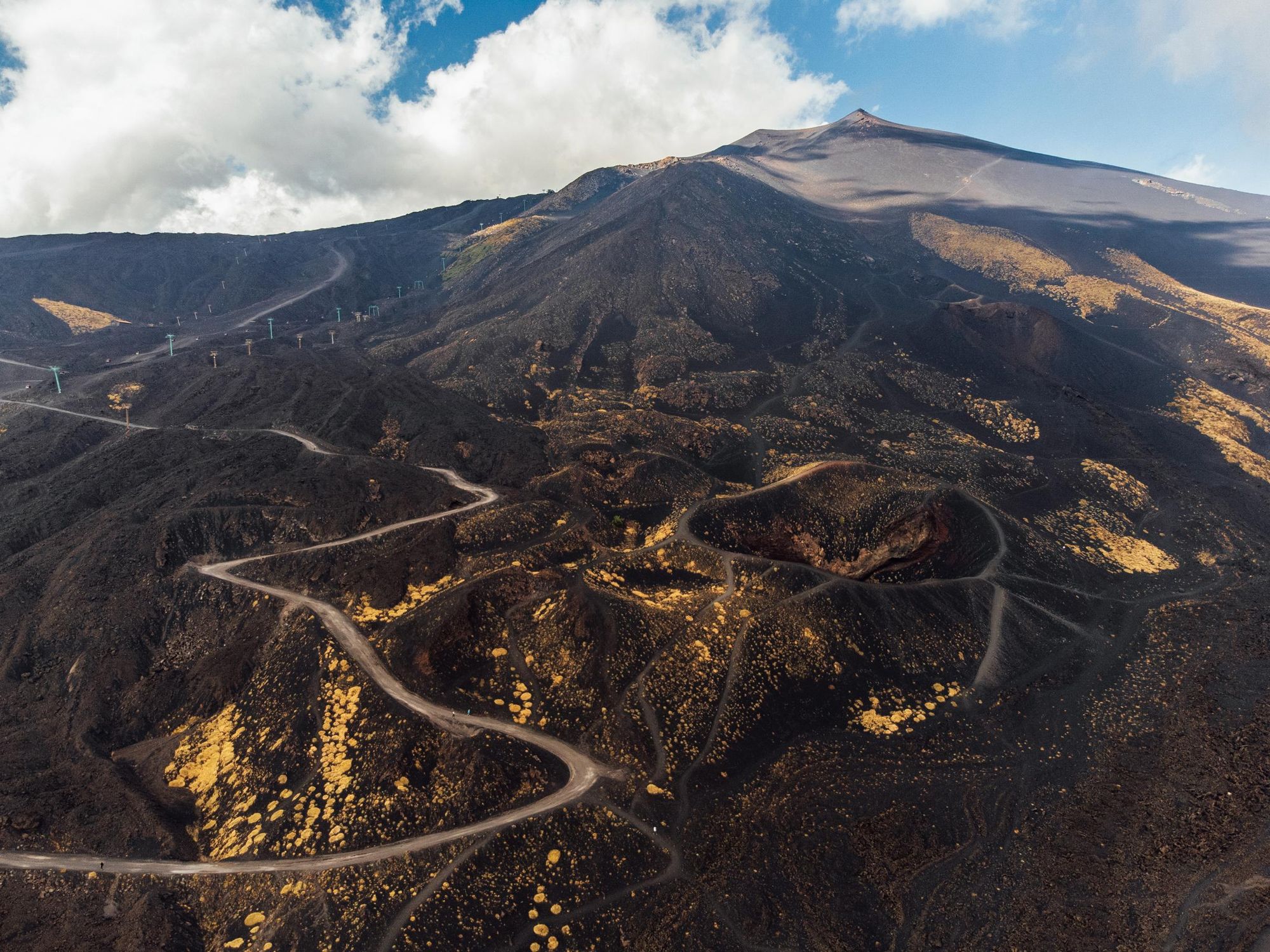
- Top route: The Sicily Divide
- Average winter temperatures: 14–17°C on the coast; near freezing on Etna’s upper slopes.
- Best for: lava trails
The Italian island of Sicily has a diverse landscape of wild mountains, Roman ruins, baroque towns, olive groves and miles of coastline. Volcanic Mount Etna (3,403m/11,165ft) dominates the skyline, its burnt lavascape extending for miles.
There are plenty of cycling routes on offer for road, gravel and mountain bike riders. The Sicily Divide is a 310.6 mile (500km) coast-to-coast adventure linking Palermo and Catania via dirt tracks, old railway lines and quiet country roads. You’ll cross Sicily’s rugged interior, pausing for delicious Italian food in timeworn villages.
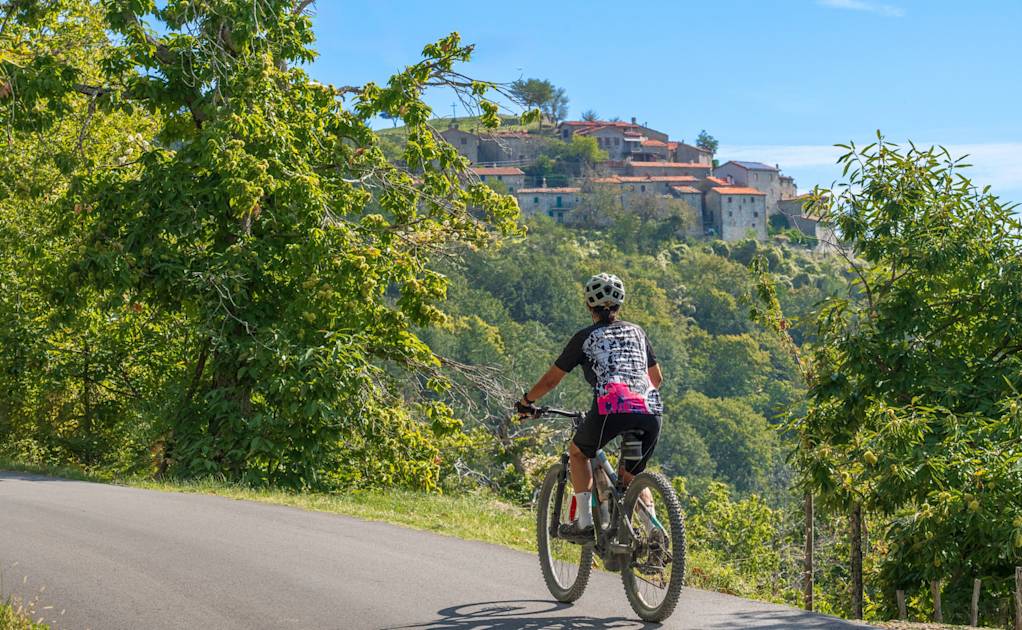
Mount Etna is also a popular cycling destination. Road riders grind up its black switchbacks, while mountain bikers tackle rough lava trails and technical singletrack. However, be aware of ascending far up during the winter months, as paths at higher elevations will be carpeted with snow.
Winter brings contrasting weather. There are mild temperatures on the coast, but inland sections will be cooler and perhaps wetter. Meanwhile, anyone wanting to head up Mount Etna’s snow-striated slopes will need warm layers.
4. Puglia & Matera, Italy
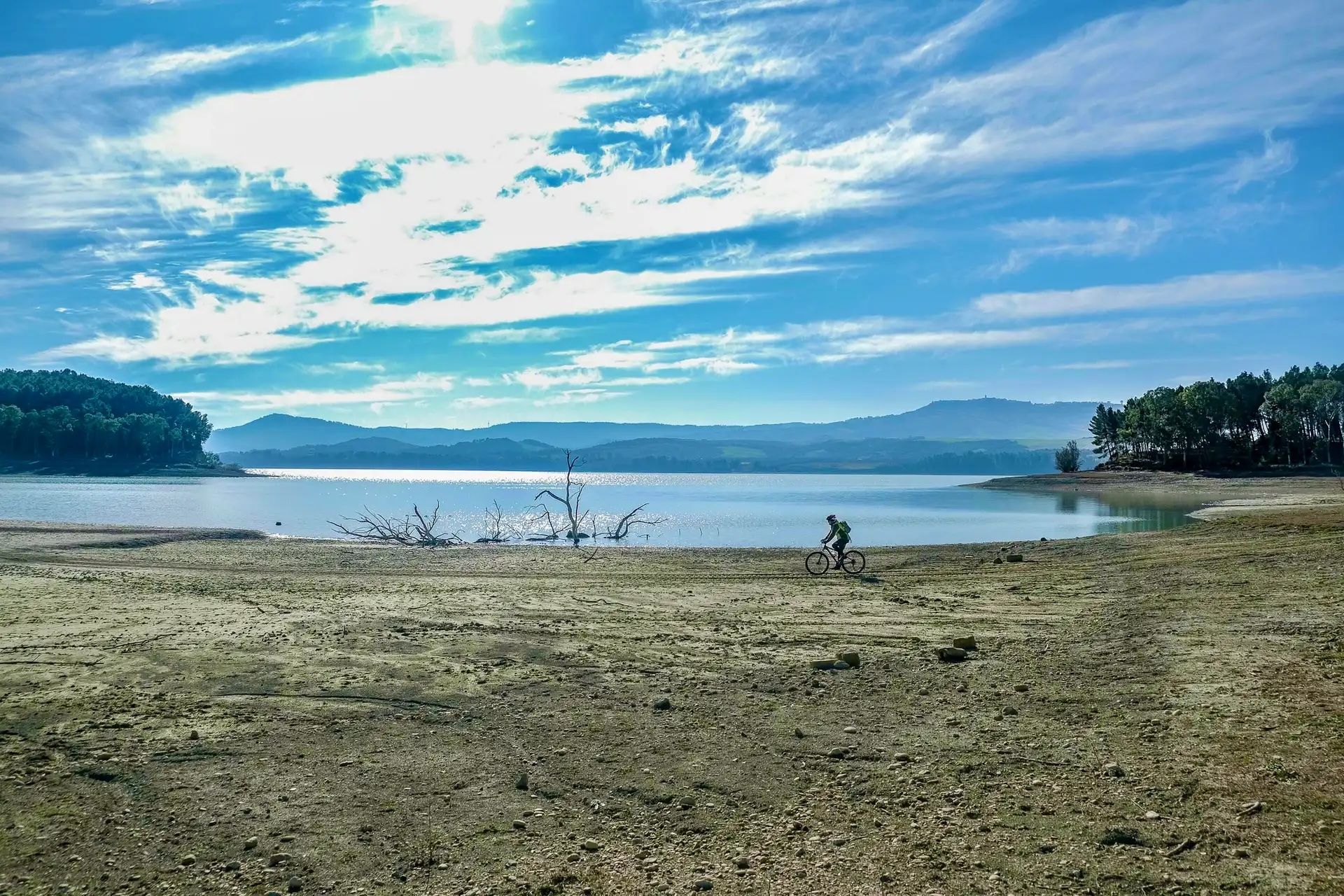
- Top route: Matera to Alberobello
- Average winter temperatures: 12–16°C along the coast; 8–12°C inland
- Best for: foodie cycle trips
The southern Italian region of Puglia is the ideal winter destination for riders looking to combine cycling with delicious food and fascinating history. Begin in nearby Matera — the troglodyte cave city perched on rugged ravines — then thread eastward into Puglia’s olive groves, limestone plateaus and narrow country lanes. Travel through the idyllic Itria Valley to Alberobello, a city with over 1,000 trulli, the cone-roofed stone houses unique to the region.
Many of the roads are lightly trafficked and feel made for gravel bikes, and we also recommend the Ciclovia dell’Acquedotto, a cycle route along an ancient aqueduct lined with trulli.
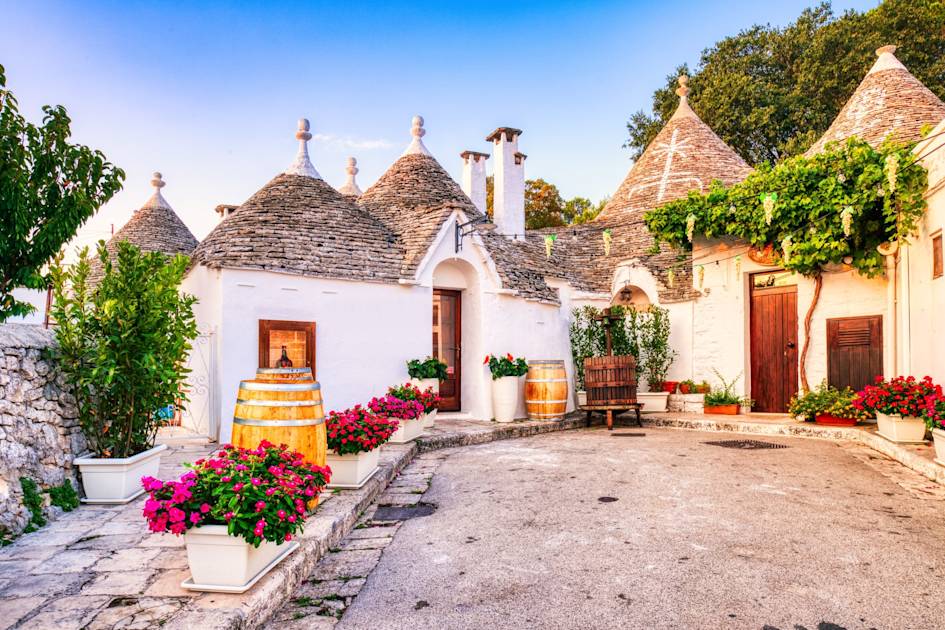
There are also multiple options for mountain biking, with scenic routes around UNESCO-designated Castel del Monte, and along the limestone Murge Plateau in Alta Murgia National Park.
This is not a destination where racking up the miles or the metres is your primary concern. Instead, it’s a great place for slow travel; exploring historic towns and stopping for indulgent meals of orecchiette pasta, focaccia and fresh local cheeses.
5. Costa Blanca, Spain
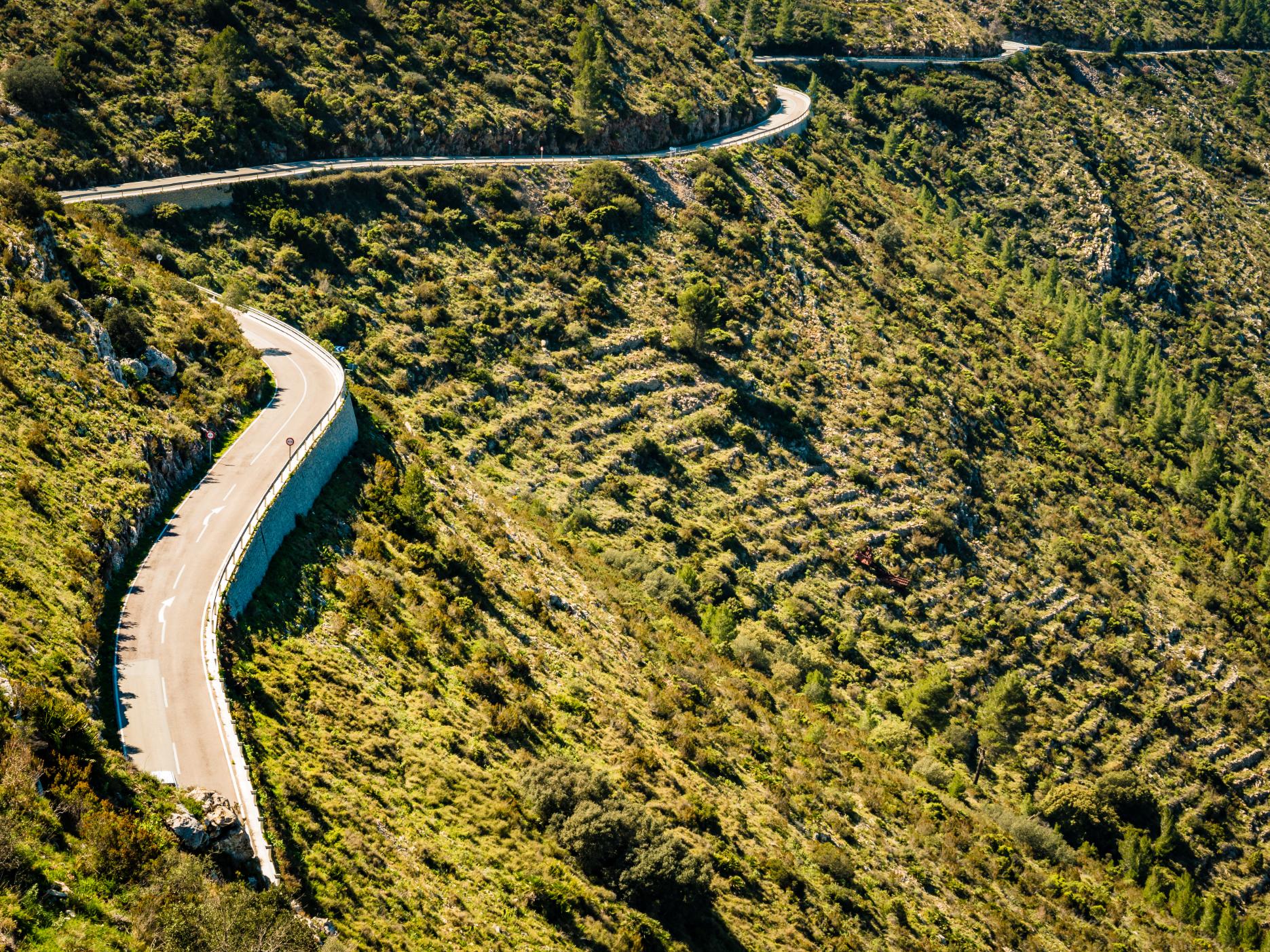
- Top route: Coll de Rates
- Average winter temperatures: 15–18°C daytime highs (Alicante)
- Best for: mountain climbs
Costa Blanca is one of the most popular winter destinations for pro-cyclists, with WorldTour teams and other professionals setting up bases in towns such as Jávea and Calpe. It’s popular thanks both to the sheer diversity of road routes—from flat coastal tarmac to rolling hills and some brutal mountain climbs to really test your endurance—and warm weather.
One of the most iconic routes is the cycle up to the top of Coll de Rates (626m/2,054ft). The road climbs relentlessly upwards, with a succession of winding corners and hairpin bends. Your legs will be burning by the time you reach the top, but the views from the mountain are exceptional. There’s even a restaurant where you can have a pitstop before the long descent.
Mountain bikers will also relish the winter rides here, with routes through a wide variety of landscapes. Check out the 14.8 mile (23.9km) figure of eight route around two distinctive rocky mountains, Ponotx and Puig Campana. Or you could head to the verdant Jalón Valley to ride the gravel paths through vineyards and olive groves.
A key attraction of the Costa Blanca region is its dry, mild climate. It’s flanked by the Montgó massif, which acts as a shield against storms rolling in off the Atlantic.
6. Tenerife, The Canary Islands
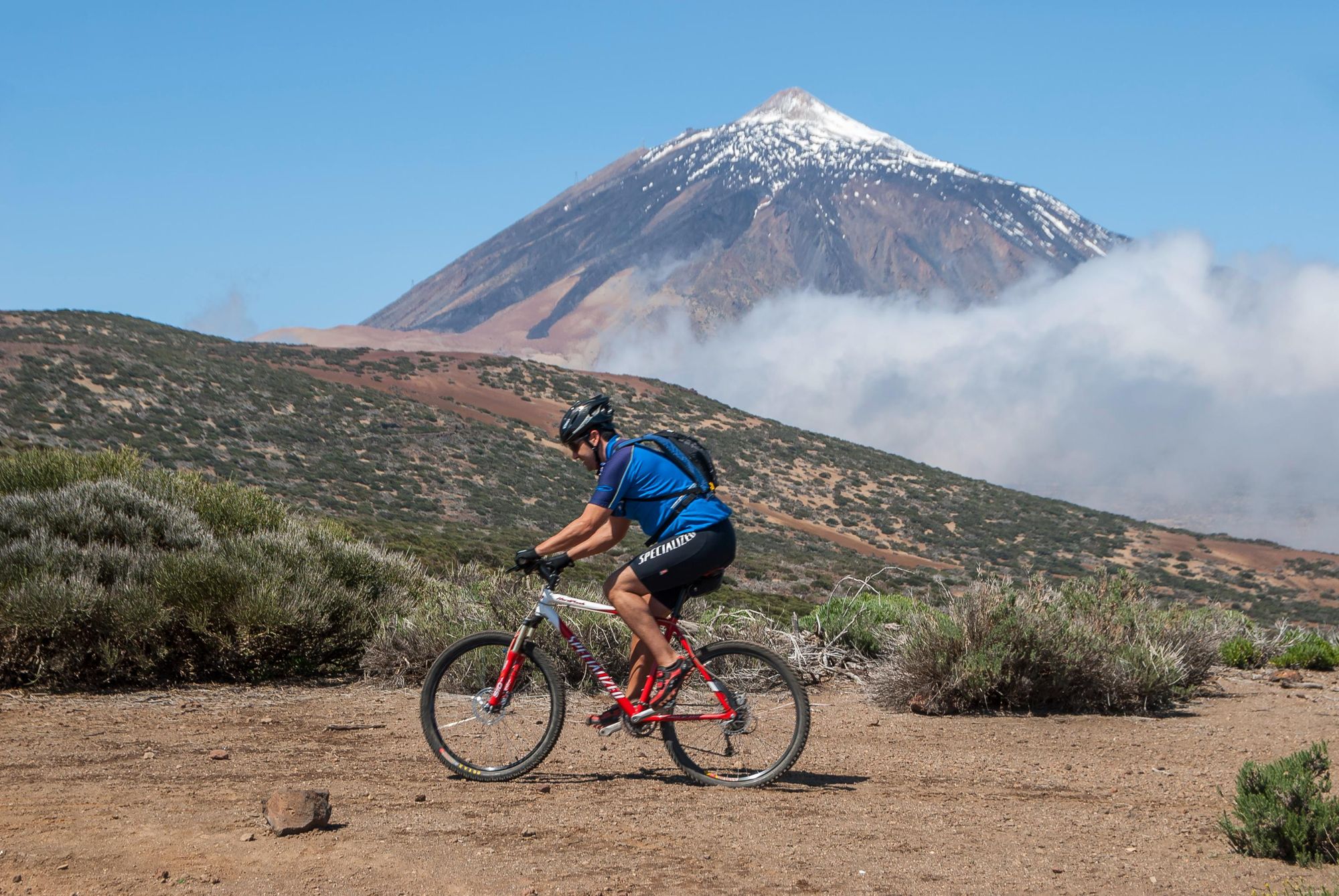
- Top route: Mount Teide Loop via La Orotava
- Average winter temperatures: 18°C–25°C on the coast
- Best for: road altitude training
Closer to the west coast of Africa than to Europe, Tenerife is a popular winter cycling destination thanks to its sunny weather. Tour the island along the TF-1, the road hugging Tenerife’s coastline, and you’ll pass through banana plantations, lunarlike volcanic landscapes and Canarian mountain towns overlooking the ocean.
It’s volcanic Monte Teide, however, which is the biggest draw for most cyclists. Looming over the island at 3,715m (12,188ft), its 2,000m+ climbs are legendary for road riders. Many pros use it to practice altitude training, as it’s one of the warmer high-altitude spots in Europe.
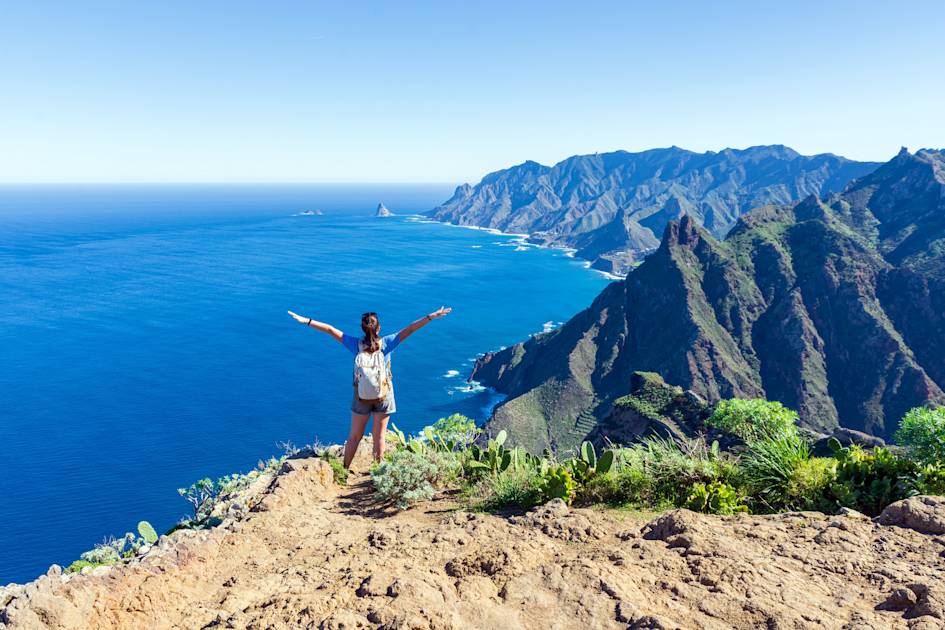
A spectacular and challenging road circuit begins near Chío, a small town on Tenerife’s western slopes, before turning inland through terraced farmland and climbing steadily towards La Orotava, a historic colonial town. From there, the road continues its relentless 23.6 mile (38 km) ascent through pine forests and volcanic landscapes, gaining over 2,300m (7,546ft) on pristine tarmac before emerging onto the vast caldera rim of Teide. From here, it’s a long descent back down to Chío.
Tenerife is also popular with mountain bikers, with long fire roads, sandy singletrack trails and technical enduro descents running through the island’s forests and volcanoes.
Winter temperatures are positively balmy on Tenerife’s coast, ranging from 18°C to 25°C. However, they drop significantly as you climb higher. Towards the summit of Teide you’ll encounter icy winds, and maybe even snow. Winters in Tenerife can also bring Calima, dust that blows in from the Sahara and reduces visibility.
7. Mallorca, The Balearic Islands
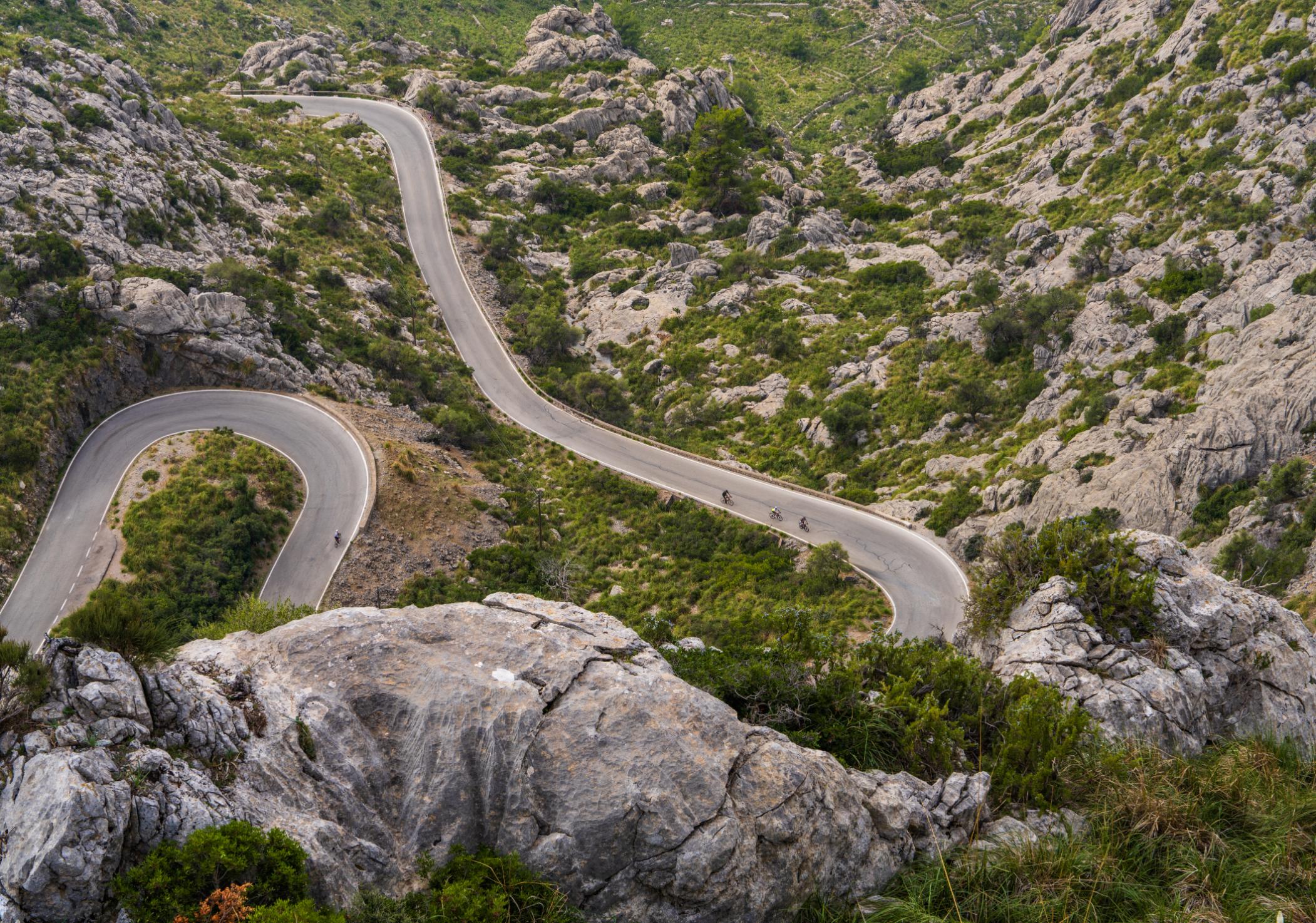
- Top route: Sa Calobra to Coll dels Reis
- Average winter temperatures: 13–16°C daytime highs (north coast).
- Best for: quiet mountain roads
The Baleriac island of Mallorca is well known for being a summer beach destination. But the winter months bring cyclists, attracted by the quiet roads and training camps on offer. The Serra de Tramuntana mountains, which form the rocky spine of the island, are popular with road cyclists, thanks to the long, scenic climbs on offer.
The road from Sa Calobra to the Coll dels Reis—a mountain pass at an altitude of 682m (2,238ft)—is Mallorca’s most iconic road route. Boasting 26 hairpin bends (including a 270° turn right before the summit) and an average gradient of 7%, it will challenge even the most experienced riders.
Mallorca has a growing gravel scene too: quiet farm tracks criss-cross the central plains, linking vineyards and villages far from tourist zones. Mountain bikers can head for Alcúdia and Pollensa to ride singletracks in the Tramuntana foothills.
Mallorca’s winter is cool but rideable, and blissfully quiet on the famous Tramuntana roads. Weather can be mild, but Mallorca does experience rainy spells, so pack your waterproofs.
8. Madeira, Portugal
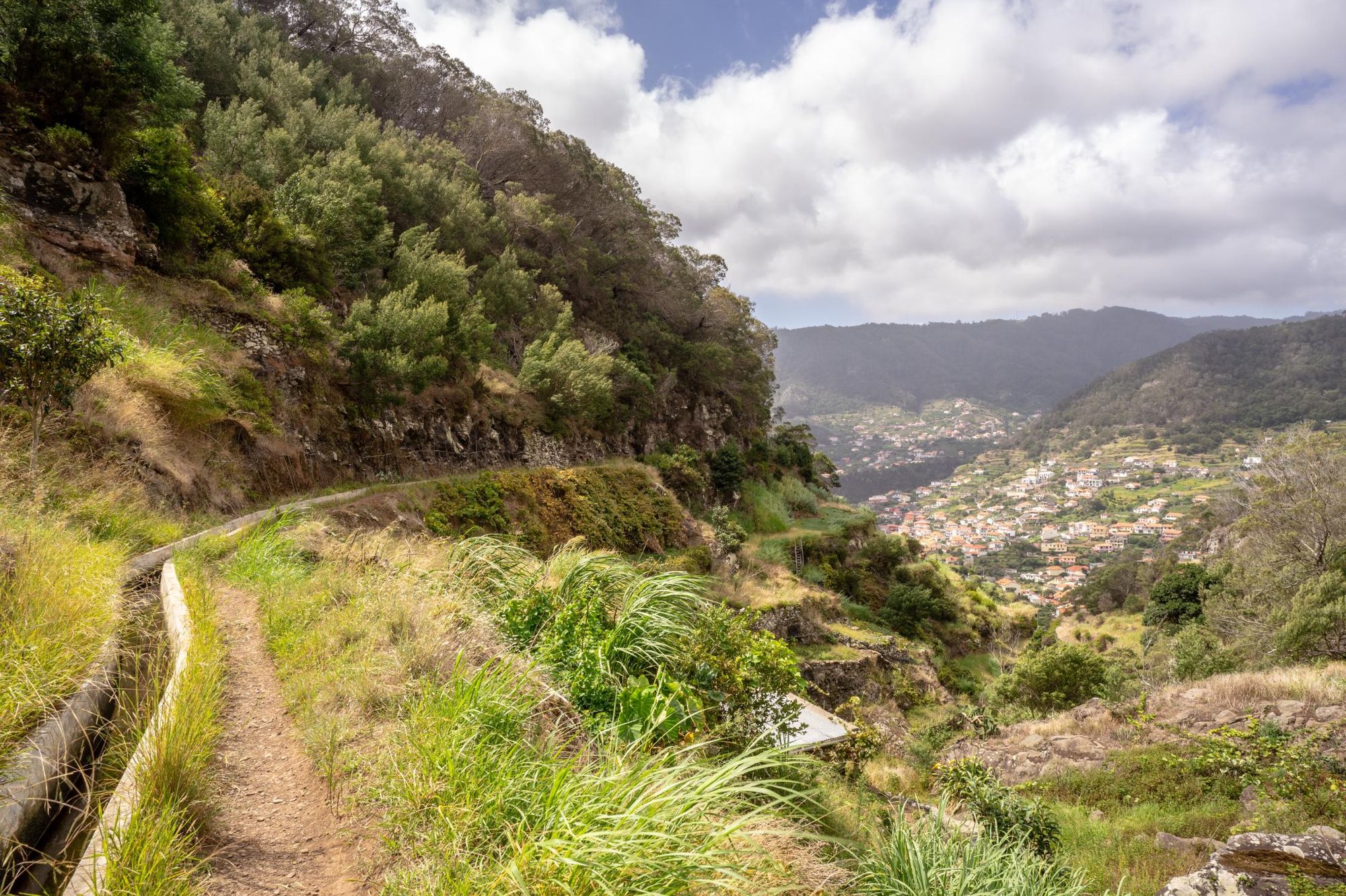
- Top route: Pico do Arieiro to Funchal
- Average winter temperatures: 16–18°C on the coast
- Best for: mountain biking
Madeira is a popular destination for mountain bikers, with steep, loamy singletrack and rainforest-like conditions that feel a world away from mainland Europe. The island is criss-crossed with steep mountain roads, forest trails and rugged levadas (irrigation channels). There’s an active cycling community here, alongside companies offering bike rental and guided trips for beginners.
Shuttle companies whisk riders to the volcanic summits inland, where 1,500m vertical descents down enduro trails through the forest take you back to the coast. One of the top rides takes you from Pico do Arieiro (1,818m/5,965ft) down rocky trails and across levadas through the forest to Funchal. The Estaca Trails are also popular—three different downhill-oriented singletracks high above Funchal and São Roque, which take you through eucalyptus forest and rocky mountain paths.
Meanwhile, road cyclists can climb from sea level to well over 1,000m in a single ride—try the relentless Poiso Pass (1,275m/4,183ft), or push higher to Pico do Arieiro for Atlantic panoramas.
Winter is a popular season for cyclists: the climate is warm and stable on the coast, but the interior can be misty, wet and windy, so bring layers and tyres that can handle mixed conditions.
9. Cyprus
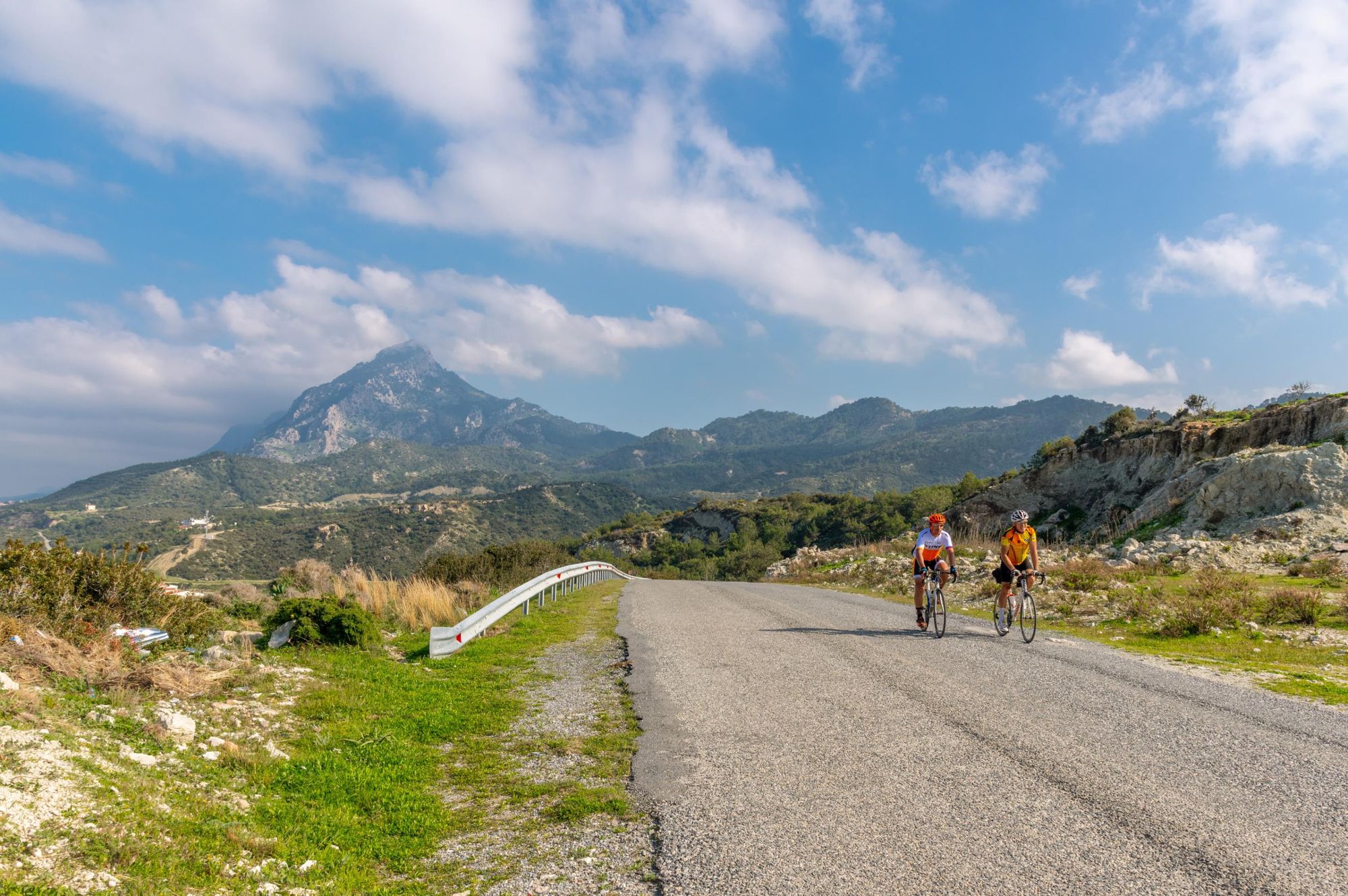
- Top route: The Cyprus Crossing
- Average winter temperatures: 16–18°C on the coast
- Best for: diverse terrain
Cyprus is one of Europe’s most versatile winter destinations, with the snowy peak of Mount Olympus (1,952m/6,404ft) a stark contrast to the sunny Mediterranean coastline. Olympus is the highest point in the forested Trodoos Mountains, their foothills carpeted with a patchwork of citrus groves and vineyards.
Road cyclists can head along calm, undulating coastal roads or brave the climb from the Mediterranean up to snowy Mount Olympus, while mountain bikers flock to the network of forest roads and singletrack in the Trodoos Mountains. There’s also the Cyprus Crossing, a 208-mile (335km) bikepacking route from Paphos to Larnaca, along 60% unpaved roads and forest tracks, linking coastal plains, the limestone hills of Cyprus’s wine country and the pine forests of Troodos.
Temperatures are mild on the coast but drop as you ride higher. Winters also bring the year’s most rain, so keep an eye on the forecast.
10. Gran Canaria, Canary Islands
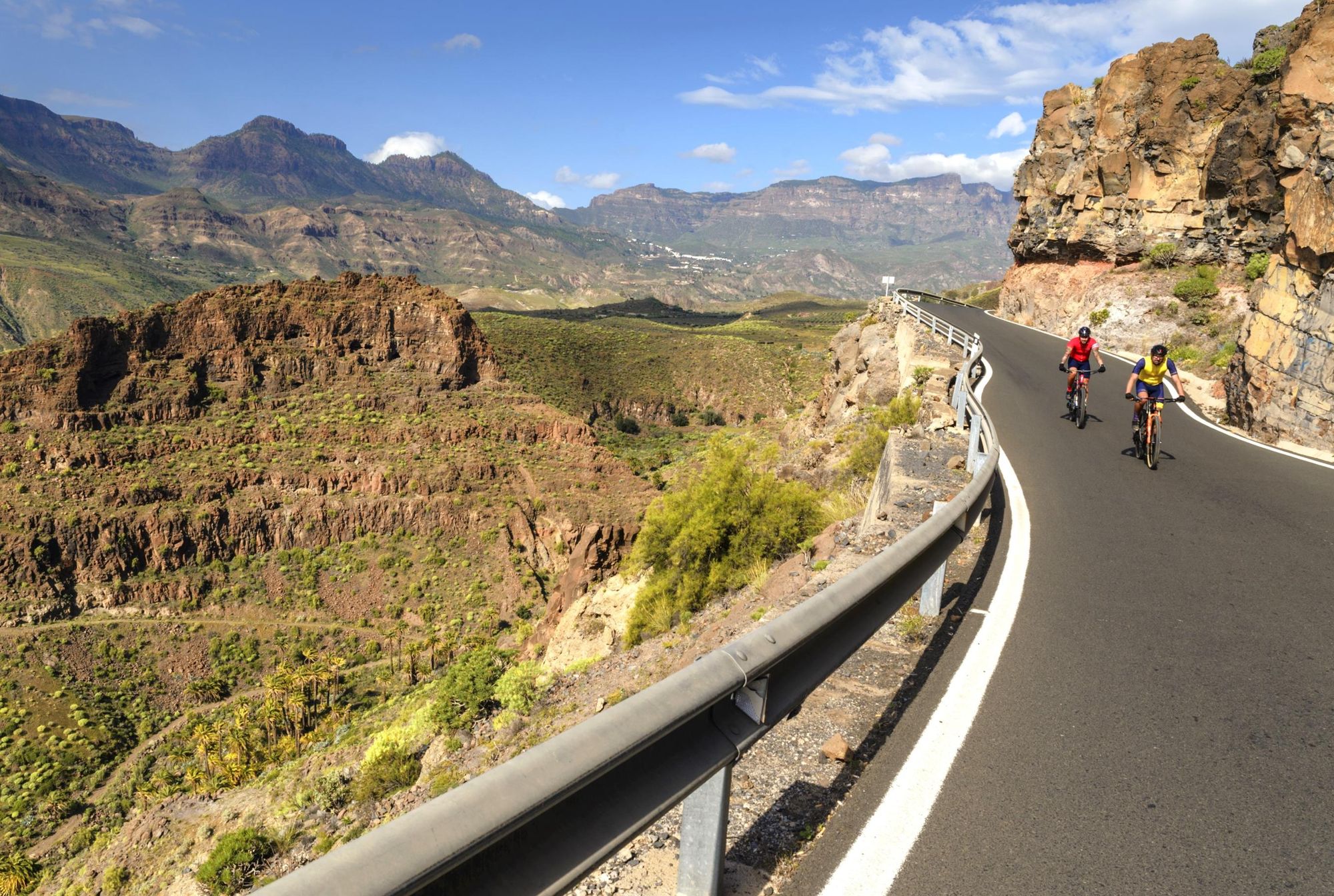
- Top route: The Valley of Tears
- Average winter temperatures: 20–22°C (Las Palmas)
- Best for: exploring a ‘continent in miniature’
Known as a ‘continent in miniature’, Gran Canaria boasts a huge diversity of landscapes, from its volcanic interior to its rugged barrancos (ravines); the undulating Maspolomas Dunes in the south and the lush laurisilva forests. Cyclists flock here year-round to explore, with the winter months being particularly popular.
Gran Canaria is famed for its serpentine road climbs, in particular the twisty routes up to its highest point, Pico de Las Nieves at 1,949m (6,394ft). The Valley of Tears via Mirador Degollada del Humo is another well-known road route, with an average gradient of 10%, and spectacular views of the mountains and the ocean beyond.
Mountain bikers will also be spoilt for choice, with a wide network of routes across the island’s varied terrain. Check out El Diablo, an 18-mile (29km) enduro trail from the rocky hinterlands down to the coastal town of Maspolomas, or a picturesque circuit through the valleys and ravines of the Fataga Protected Landscape.
Gran Canaria’s south is reliably sunny, while the north and interior can be cloudier and cooler. Remember to wear sunblock—the sun is surprisingly strong here.
Inspired? Check out our Cycling Adventures in Europe and beyond!


